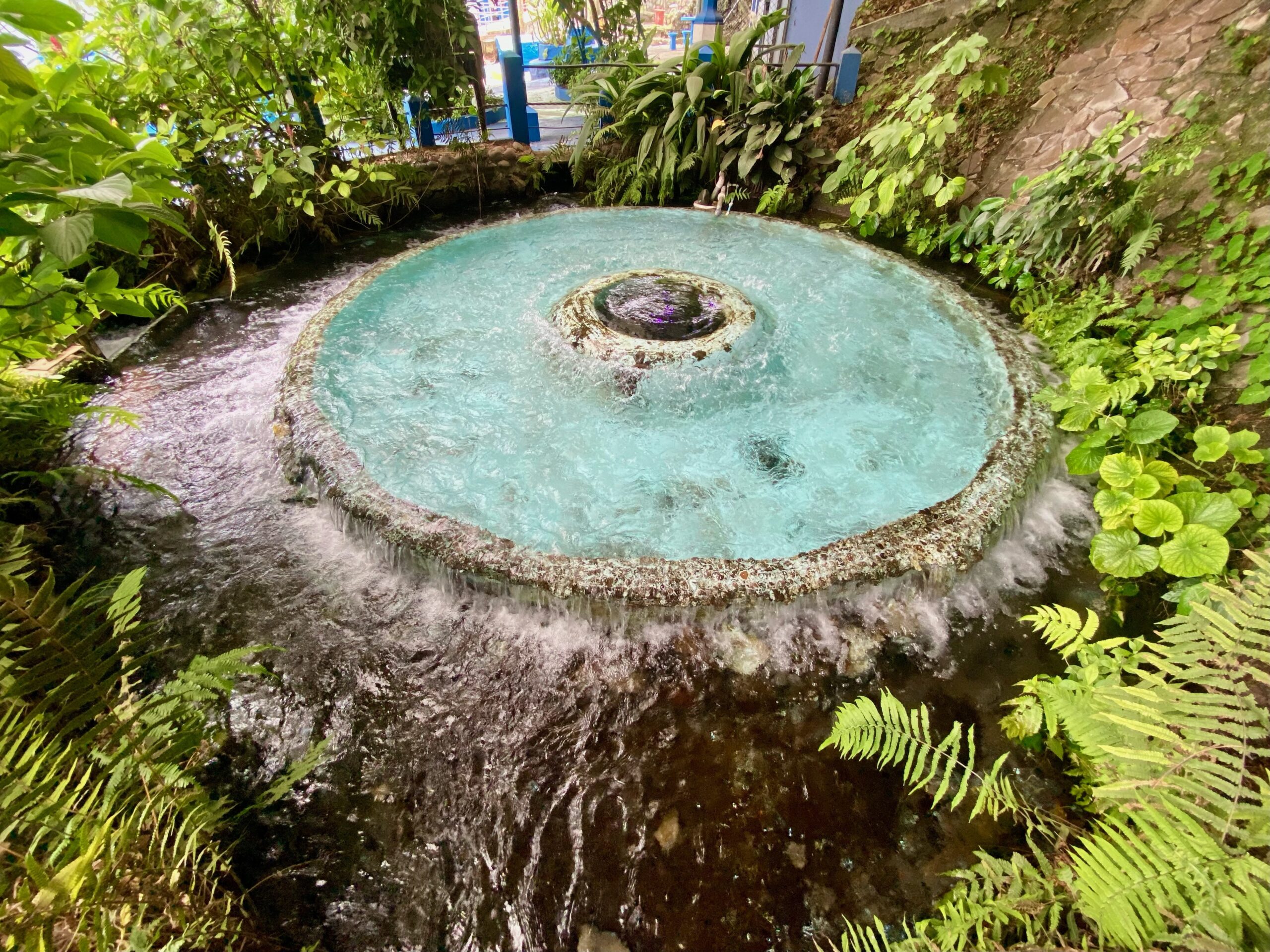The first time I went to Ojo de Agua I was about seven years old. It was a Sunday in the late seventies, and I had stayed overnight with my cousins. That morning my aunt Liliana had woken up with a very clear purpose: to take us to see “the eye through which water came out of the bottom of the Earth”. We could play in the pools if we saw, first, that wonder of nature. Without thinking much about it, all of us who half knew how to swim got into the back seat and trunk of the Datsun.
The first thing we did, of course, was to go see the eye. You had to climb some stairs and peek through some leafy plants. I could see between the leaves: it was a blue eye. A monstrous eye of the Earth that cried nonstop. Would it be possible for all the water on the planet to come out through blue eyes like that? Very scared, after that close encounter with nature, I preferred not to ask.
Everything was huge in the resort: the pools, the trampolines, the soccer field. There were many, many people. Children and adults fell from the sky. Some dove into the water; others celebrated tremendous belly bumps. In the distance, La avispa, by La Banda, was playing. Immersed in a happy chaos, the children enjoyed themselves and the mothers scolded. I tried to swim up and down the pool, but I didn’t succeed. It was infinite.
Lavas and fractures
The second time I went to Ojo de Agua I was twenty years old. I suppose I had not returned because of the prejudice that was associated with the place. Why go there when you could go to a private club? So, I only came back because a volleyball match had been organized for the university team. Again, there were a lot of people. Too many. La Bilirrubina, by Juan Luis Guerra, was playing, and the pools were overflowing, not only with children, but also with coloured balls and inflatable mermaids.
I was very curious to see my blue-eyed monster. This time I shouldn’t be terrified, especially since, as a geology student, I knew that water springs are neither circular nor blue. Would the ancient lava of the Barva volcano through which, through its fractures, the water reaches the spring, be visible? I knew that these fractures function as underground pipes that carry water, from where it infiltrates to the spring. However, I did not see the lava. It would be necessary to look for it outside the resort, but that would be during another visit.
On the wall, a plaque recalled the inauguration of Ojo de Agua in the 1930s, during the administration of Don Ricardo Jiménez. Sixty years later there were divers and weightlifting competitions, dozens of families having fun in the water, and some young people like me, who were unable to recognize the importance of those spaces.
Territories
A few days ago I went, for the third time, to Ojo de Agua. Unlike my previous visits, there were few people that Sunday. As usual, I went to see the blue eye. For a few minutes I stared at him in amazement and admiration. It is estimated that about 100 litres of water come out of this generous source per second. In other words, its flow could be enough to supply some 85,000 people for a day.
There were few divers. Apparently fewer people come since they removed the lower trampoline. The bendy one. The pools, again, seemed very large to me. Maybe because I didn’t remember that there are four pools in total. There were many Nicaraguan families enjoying the water and the sun. Despechá, by Rosalía, was playing. The soccer field was in perfect condition and, for the first time, I saw that there was also a tennis court. No one was using them.
I walked along the path that surrounds the lake. I saw green egret chicks fresh out of the nest and their mother, who told them where to go or not to go. Teenagers in bathing suits came past. Many members of the Chinese community enjoyed rowboats. Towards the south side of the lake were the ash deposits that are under the lavas that create the spring, like the tip of a long tongue of stone.
I went to say goodbye to the big blue eye, which has been watching me since I was a child. It has always been there, during all these years, draining itself, magnificent. Its water fills the spa, which then feeds the lake and then reaches the La Fuente River, which gives life to a part of San Rafael de Alajuela. The eye is, then, larger than its territory. It is a space in continuous expansion, which gives life to those who visit it. An infinite eye.

